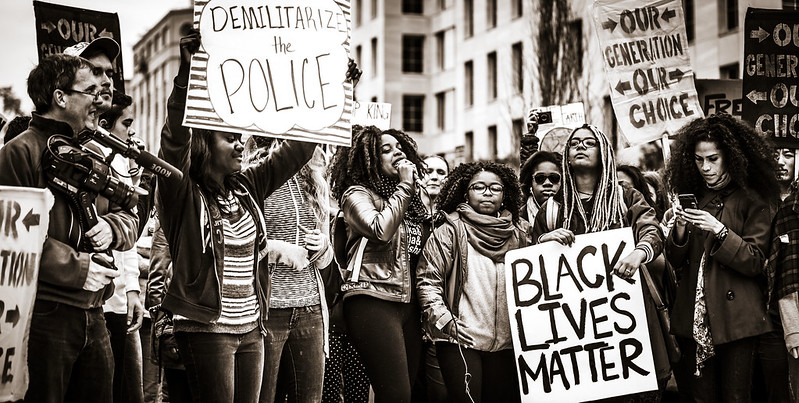How COVID-19 Could Enable the Inclusion of Women in the Workplace
Dr. Ifeoma Ajunwa
11/23/2020
According to a recent McKinsey report, “Women in the Workplace,” one in four women are considering downgrading their careers or exiting the workforce altogether. The study warns that as many as 2 million women are considering taking a leave of absence from the workplace.
But which women, in particular? The report found three groups most impacted by the COVID-19 crisis:
- Women with child care obligations,
- Senior-level women, and
- Black women.
Mothers contemplating downshifting their careers point to their child care obligations as the primary reason. With many schools closed, many mothers have difficulty either finding or affording child care.
Senior-level women are the most likely to feel this burnout of increased child care responsibilities and no corresponding decrease in work responsibilities. Those senior women are simply expected to keep up with their senior male counterparts—all the while, also picking up the child care burden at home.
Black women have also been disproportionately impacted by COVID-19. At the same time as we had the viral pandemic, we had also what the American Psychological Association termed a “racism pandemic,” erupting in racial violence against Black people. Thus, these women are dealing with both the fear of sickness, and the concern of police brutality.

A silver lining, however, is that with a threatened mass exodus, the pandemic has prompted a national conversation about the plight of women in the workplace and the issues that impede their success at work. If greater attention is paid to these issues, this pandemic-fueled recession could enable the future inclusion of women in the workplace for three reasons.
1. Workplaces Get More Flexible
The pandemic is prompting many corporations to rethink flexible work arrangements, proving with technologies—such as e-mail, video meetings and e-sign—it is possible to carry out most, if not all work, outside the physical confines of the office. This means that women who can’t commute to work because of their child care drop-off and pick-up times could foreseeably still hold down jobs outside the home.
In addition, flexible work arrangements that afford freedom from the 9-5 office clock mean that the national 2 p.m. or 3 p.m. school end hours—which had previously prevented women who can’t afford child care from working—could be circumvented. In sum, flexible work arrangements enable women who shoulder so many other personal responsibilities to work professional jobs.
Of course, not all women are lucky enough to be able to work remotely: For women who are essential workers and must work in a physical workplace, it’s crucial that we raise the issue of having child care present in the workplace or work-subsidized child care.
2. Recognition of the Importance of Child Care for the Economy
Second, the pandemic and the resulting school and daycare closures have prompted a recognition of the importance of child care for the economy.
Thirty-two percent of the U.S workforce has a child under the age of 14. In 30 percent of those families, the children are all under six years old.
Notably, there are many more single mothers than there are single fathers. In 2017, 21 percent of children in the U.S. lived with a single mother, while only 5 percent of children lived with a single father. Even among heterosexual married couples, mothers typically provided 60 percent or more of the child care before the pandemic.
Since the pandemic, a survey of remote workers found that men increased their child care time by 4.7 hours per day, while women increased theirs by 6.1 hours—meaning women, much more than men, are most likely to see their work negatively affected by the diminished access to child care during the pandemic. This in turn, will drive up the unemployment rate and negatively affect the economy.
Given the dire straits of the economy, access to child care can no longer be considered solely an individual responsibility that women alone are expected to bear, but must be confronted as a national crisis and one of the focal points of the presidential election.
As President-Elect Joe Biden noted, “We’re trapped in a caregiving crisis, within an economic crisis, within a healthcare crisis.” To that end, Biden has proposed a $325 billion child care plan that would establish a federal-state partnership to provide high-quality, universal kindergarten for all 3-4 year olds, tax credits of up to $8,000 per child for low and middle-income families, and incentives for businesses to build in-house child care centers.
3. A Renewed Focus on Black Women at Work
A hopeful outcome for the pandemic is a focus on issues affecting Black women in the workplace. As the McKinsey report found: Black women are less likely to feel supported at work during the COVID-19 crisis. This is compounded by that fact that Black and Latinx communities have experienced more deaths from the COVID-19 crisis and that publicized incidents of racial violence in the U.S. exact a psychological toll on those women.
Even before the pandemic, many Black women had already reported feeling excluded at work. Ignored issues of racism have long eroded the psychological safety of Black women in the workplace. Perhaps the potential loss of many Black women workers will prompt businesses to finally truly engage with the work of racial inequity and inclusion rather than merely paying lip service to diversity.
Load older comments...
Loading comments...
You've Been Timed Out
Please login to continue